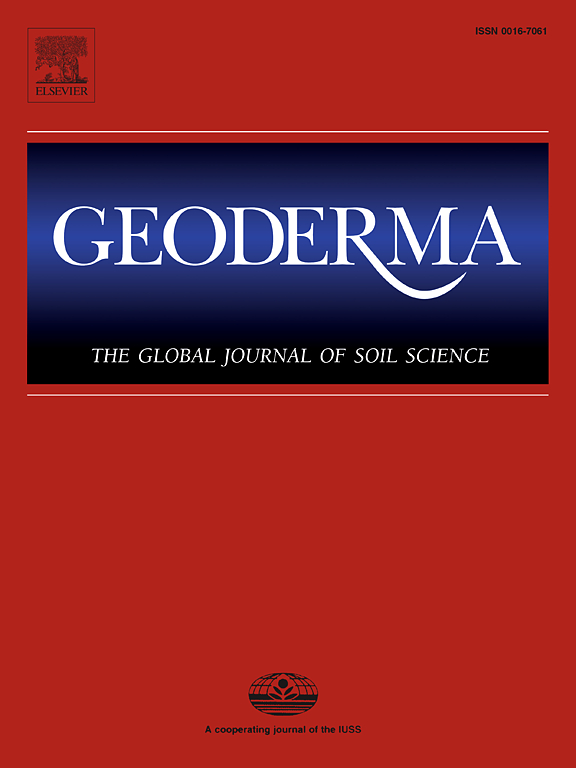研究动物粪便对胶体促进磷运输的影响
IF 5.6
1区 农林科学
Q1 SOIL SCIENCE
引用次数: 0
摘要
通过土壤大孔隙的优先流动可以增加渗滤液中磷的损失。动物粪便的施用会进一步加剧渗滤液中各种形式磷的损失。在将渗滤液中胶体促进磷的损失作为粪肥类型的函数进行量化方面的工作有限。因此,本研究的目的是通过柱状降雨模拟实验,确定三种粪便类型(即家禽粪便、猪泻湖污水和奶牛粪便)对不同形式磷淋溶的影响。完好无损的土壤柱收集自位于美国阿拉巴马州的牧场。总体试验设计包括4个处理,每个处理2个重复(率为1的家禽粪便(固体),率为2的家禽粪便(半固体),以及猪泻湖污水(液体)和未修改的对照)。溴化物突破曲线显示出优先流动的迹象。处理柱的流量加权平均总磷浓度范围分别为5.4 ~ 6 mg L - 1、6.22 ~ 12.18 mg L - 1、0.95 ~ 1.42 mg L - 1和0.29 ~ 1.1 mg L - 1,分别为速率1、速率2、猪湖污水和奶牛粪便处理柱。胶体磷占处理柱总磷浸出量的5% ~ 49%。因此,本研究结果表明,胶体促进磷的迁移可能是显著的,在阐明动物粪便施肥农业系统中磷的运输时应予以考虑。本文章由计算机程序翻译,如有差异,请以英文原文为准。
Investigating the effect of animal manure on colloidal-facilitated phosphorus transport
Preferential flow via soil macropores can enhance phosphorus (P) loss in leachate. The application of animal manure can further exacerbate P losses in leachate in various forms. Limited work has been done to quantify colloidal-facilitated-P loss in leachate as a function of manure type. Therefore, the goal of this study was to determine the impact of three manure types, namely, poultry litter, swine lagoon effluent, and dairy manure, on P leaching in various forms using column-based rainfall simulation experiments. Intact-undisturbed soil columns were collected from a pasture field located in Alabama, USA. The overall experimental design included four treatments with two replications each (poultry litter (solid) at rate 1, poultry litter (solid) at rate 2, dairy manure (semi-solid), and swine lagoon effluent (liquid) and unamended control). The bromide breakthrough curves showed evidence of preferential flow. The flow-weighted mean total P concentrations for treatment columns ranged from 5.4 to 6 mg L−1, 6.22 to 12.18 mg L−1, 0.95 to 1.42 mg L−1, and 0.29 to 1.1 mg L−1 for columns treated with solid poultry litter at rate 1, solid poultry litter at rate 2, swine lagoon effluent, and dairy manure, respectively. Colloidal P accounted for 5 to 49 % of the total P leaching from the treatment columns. Therefore, the results of this study show that colloidal-facilitated migration of P can be significant and should be considered when elucidating P transport in agricultural systems fertilized with animal manure.
求助全文
通过发布文献求助,成功后即可免费获取论文全文。
去求助
来源期刊

Geoderma
农林科学-土壤科学
CiteScore
11.80
自引率
6.60%
发文量
597
审稿时长
58 days
期刊介绍:
Geoderma - the global journal of soil science - welcomes authors, readers and soil research from all parts of the world, encourages worldwide soil studies, and embraces all aspects of soil science and its associated pedagogy. The journal particularly welcomes interdisciplinary work focusing on dynamic soil processes and functions across space and time.
 求助内容:
求助内容: 应助结果提醒方式:
应助结果提醒方式:


